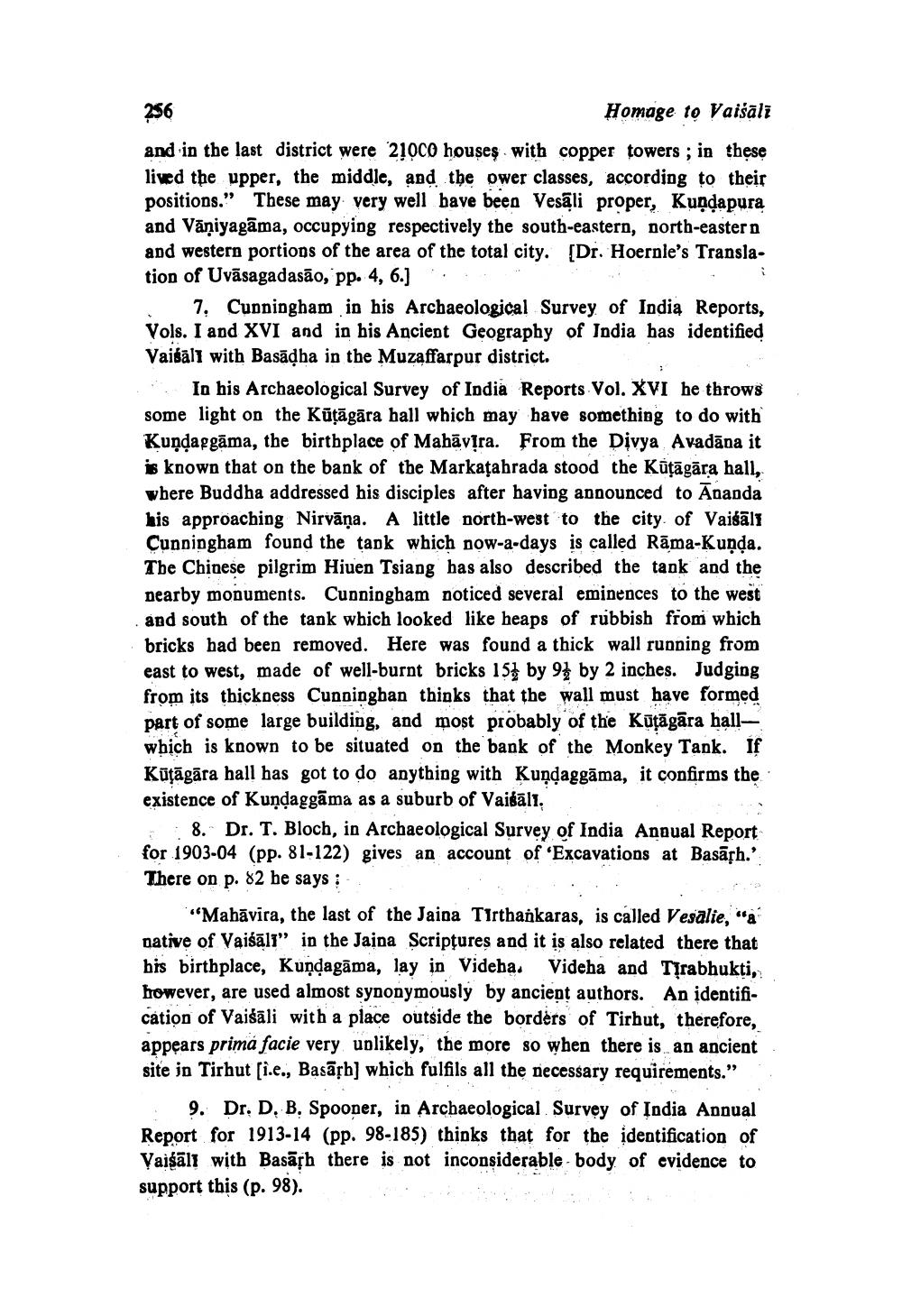________________ 256 Homage to Vaisali and in the last district were 21000 houses with copper towers ; in these lived the upper, the middle, and the ower classes, according to their positions." These may very well have been Vesali proper, Kundapura and Vaniyagama, occupying respectively the south-eastern, north-eastern and western portions of the area of the total city. [Dr. Hoernle's Translation of Uvasagadasao, pp. 4, 6.] ** 7. Cunningham in his Archaeological Survey of India Reports, Vols. I and XVI and in bis Ancient Geography of India has identified Vaisali with Basadha in the Muzaffarpur district. 1. In his Archaeological Survey of India Reports Vol. XVI he throws some light on the Kutagara hall which may have something to do with Kundapgama, the birthplace of Mahavira. From the Divya Avadana it is known that on the bank of the Markatahrada stood the Kutagara hall, where Buddha addressed his disciples after having announced to Ananda his approaching Nirvana. A little north-west to the city of Vaisali Cunningham found the tank which now-a-days is called Rama-Kunda. The Chinese pilgrim Hiuen Tsiang has also described the tank and the nearby monuments. Cunningham noticed several eminences to the west and south of the tank which looked like heaps of rubbish from which bricks had been removed. Here was found a thick wall running from east to west, made of well-burnt bricks 151 by 91 by 2 inches. Judging from its thickness Cunninghan thinks that the wall must have formed part of some large building, and most probably of the Kulagara hallwhich is known to be situated on the bank of the Monkey Tank. If Kutagara hall has got to do anything with Kundaggama, it confirms the existence of Kundaggama as a suburb of Vaisali, 8. Dr. T. Bloch, in Archaeological Survey of India Annual Report for 1903-04 (pp. 81-122) gives an account of 'Excavations at Basalh.'. There on p. 82 he says : - "Mahavira, the last of the Jaina Tirthankaras, is called Vesalie, "a native of Vaisali" in the Jaina Scriptures and it is also related there that his birthplace, Kundagama, lay in Videba. Videba and Tirabhukti, however, are used almost synonymously by ancient authors. An identification of Vaisali with a place outside the borders of Tirhut, therefore, appears prima facie very unlikely, the more so when there is an ancient site in Tirhut [i.e., Basalb) which fulfils all the necessary requirements." 9. Dr. D. B. Spooner, in Archaeological Survey of India Annual Report for 1913-14 (pp. 98-185) thinks that for the identification of Vaisali with Basalh there is not inconsiderable body of evidence to support this (p. 98).




